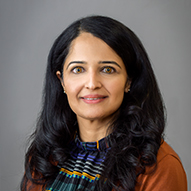Dallas
214-456-2382
Fax: 214-456-6133
Plano
469-303-4400
Fax: 469-303-4420
Referrals
Request an Appointment with codes: Cancer and Blood Disorders (CCBD)
If your child is experiencing a bleeding disorder or thrombosis, Children’s Health is among a small number of hemostasis thrombosis centers in the country. This designation is important because it means we have a wide-ranging team of doctors, nurses, social workers, physical therapists and research professionals who can help your child.
214-456-2382
Fax: 214-456-6133
469-303-4400
Fax: 469-303-4420
Request an Appointment with codes: Cancer and Blood Disorders (CCBD)
Bleeding disorders are a group of conditions where the body’s blood clotting process doesn’t work properly. During the clotting process, blood changes from a liquid to a gel, which stops your body from bleeding after a cut or injury. When your body can’t make your blood clot properly, it can lead to heavy bleeding.
When your blood clots too much, it can harm your blood flow. Thrombosis is a condition where a blood clot forms where it’s not supposed to, in areas like veins or arteries. If left untreated, this can block the flow of blood to the heart, brain or lungs, which can cause serious health problems like a stroke.
We specialize in treating several types of bleeding disorders in children and teens, including:
Hemophilia is a bleeding disorder that is usually genetic. Children with hemophilia have little or no clotting factor VIII (Hemophilia A) or clotting factor IX (Hemophilia B). Children with hemophilia can experience spontaneous bleeding or bleeding with trauma in the joints. Bleeding can also occur in muscles, the mouth and nose, internal organs or in the brain. Without proper clotting factors, this can lead to complications like joint damage or even become life-threatening.
Von Willebrand disease is a bleeding disorder that is almost always inherited. Children with von Willebrand disease either have low levels of von Willebrand clotting factor or the clotting factor does not work as it should. Children with von Willebrand disease might experience nosebleeds, mouth bleeds, blood in their stool or urine, excessive bruising, heavy menstrual bleeding, increased bleeding after medical procedures and even bleeding joints, depending on the severity of von Willebrand disease.
Children may also have other rare bleeding disorders where they're missing different clotting factors.
This is when the number of platelets (blood cells) are reduced, impaired or both. Depending on the severity, children can experience increased bruising, nosebleeds, oral bleeding, increased bleeding with medical procedures and even serious life-threatening bleeding.
The three most common types of thrombosis in children are:
This is an inherited blood disorder. Children with thrombophilia have a greater risk of developing blood clots that spontaneously form in blood vessels.
This is a condition where poor blood flow causes a blood clot to form in a blood vessel, most commonly in the legs but also the arms. Children who have limited activity or movement (often because of illnesses like cancer, heart disease or lung disease) are at risk for DVT. These require prompt treatment to avoid blood clots traveling to the lungs.
If one of the pulmonary arteries or branches in your lungs is blocked, it’s called a pulmonary embolism. It’s caused by a blood clot that travels from a lower part of the body, like an extremity (arm or leg) to the lungs. If the clot blocks blood flow to your child’s lungs, this could be serious.
Symptoms of bleeding disorders include:
It’s especially important to watch for these symptoms in your child if your family has a history of bleeding disorders.
Many children with thrombosis have no symptoms, but if a child is at risk because of family history or a chronic disease, parents should watch for:
If your child has a bleeding disorder or thrombosis, it’s important to diagnose the disorder promptly and accurately.
If your child has symptoms of a bleeding disorder, your child’s doctor likely will conduct a thorough physical exam and ask about your child’s medical history and your family’s history of similar disorders. Doctors might order blood tests, which can determine:
Left untreated, thrombosis can lead to serious and life-threatening complications. Your child’s doctor will do a thorough physical exam and ask about your child’s medical history and your family’s history of similar disorders, in addition to:
Bleeding disorders and thrombosis are often genetic conditions. This means kids are more likely to have these conditions if their parents have them. Scientists are still learning about what causes genetic problems that lead kids to be born with these conditions.
Medications can help kids with conditions like hemophilia or von Willebrand disease manage their bleeding disorder. These therapies are designed to control or prevent bleeding by replacing missing or dysfunctional clotting factors and stimulating the release of more clotting factors.
Your child’s doctor will recommend treatment for thrombosis based on risk for complications. This includes:
We have a team of hematologists, radiation specialists, social workers, physical therapists and research professionals who work together to deliver the best treatments available. The doctors at Children’s Health are also on the faculty at UT Southwestern Medical Center. This means they have specialized training and experience, and many years of experience helping children like yours overcome cancer.






Symptoms may include:
Mild hemophilia may not become obvious until a child experiences serious injury or surgery. Moderate to severe hemophilia can cause spontaneous bleeding in the joints, muscles, soft tissues or brain before age 2, or with procedures or surgeries.